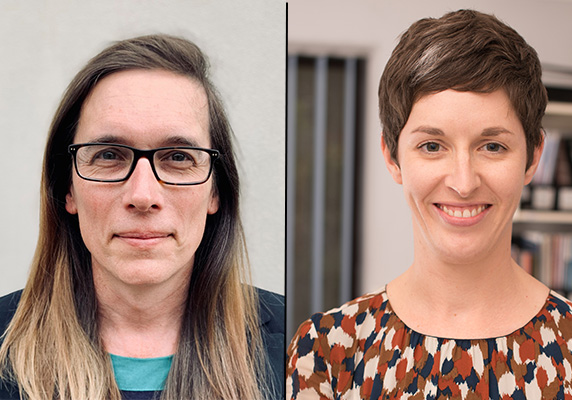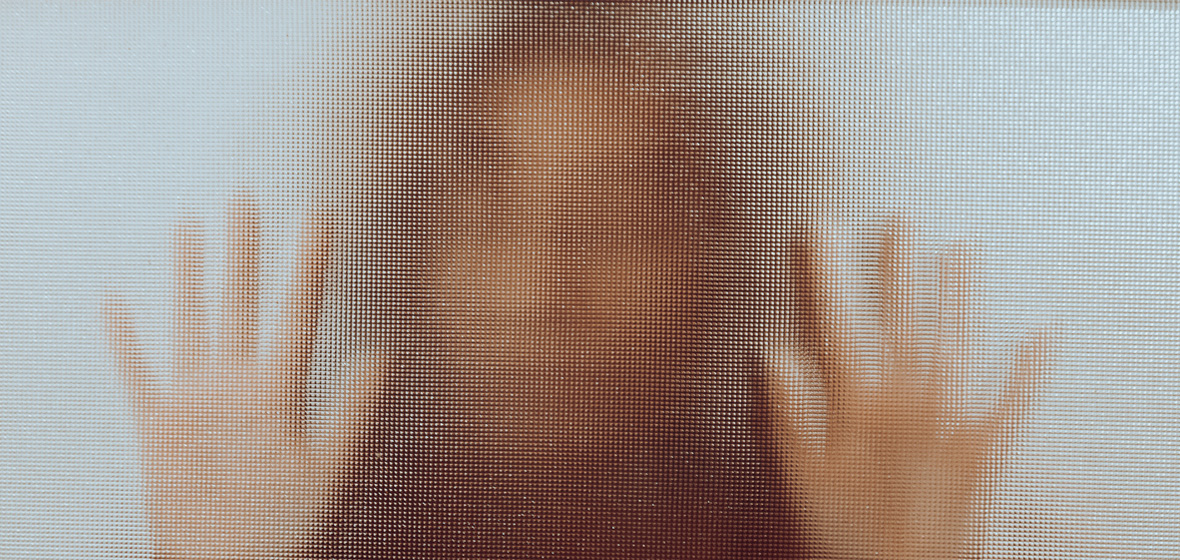Imagine you're in prison while pregnant, unsure of where your baby will end up, or incarcerated in an environment at odds with your gender identity: this is reality for some of the most vulnerable people in our community.
The trans experience in prison
The challenges that the trans community is facing today, within prisons and the justice system more widely, are not new.
Eloise Brook, health and communications manager at The Gender Centre in Annandale, NSW, says the organisation has been working with the NSW justice system for almost three decades to support trans and gender diverse people in prison.
Central to providing safety to members of this community is ensuring their identity and their ability to access the relevant care are upheld – that is, that they are afforded their “basic rights”.
“When we’ve been working in this space, we’ve been trying to make sure that we work towards … respect for identity and gender identity, that someone who is incarcerated in prison still deserves the same right to be able to identify,” Brook explains.
The Gender Centre’s work aims to make sure that trans people’s experience in prison is no different to that of any other incarcerated person. This challenges what Brook refers to as “the potential for discrimination and violence and … social stigma”.
Prison and gender identity
The NSW prison system allows trans people to be “placed in a correctional centre appropriate to their gender or identification”, with certain conditions.
The location of trans prisoners – whether in a men’s or a women’s prison – is determined on a case-by-case basis in NSW, Brook says, and is subject to the availability of prison spaces. This can work well for some people for various reasons: for safety, for mental health and social and sexual validation, for example.
The Gender Centre is supportive of this case-by-case approach, but Brook notes that self-identification is another factor that can add complexity.
“If someone wants to identify as female and they want to go into the female [prison] population, then one of the assessment criteria around that is how [far] they are into their transition,” she explains. This is done to ensure the safety of all parties involved in the potentially violent prison environment.
“Because of the nature of the prison population, there is a greater risk of violence … and the chance [of] sexual assault is really high in that population. But then, it depends which prison [you’re in] … or the type of population and where you end up.”
The “flip side”, she explains, is that if a trans woman has been charged or convicted of sexual violence or what’s considered to be a serious or violent crime, they are more likely to be held with the male prison population.
Getting out
The Gender Centre provides prison outreach services and works closely with some of the most disadvantaged people in the community, both in the lead up to prison time and on returning to the general population.
The latter is particularly important, Brook says.
“If someone commits a crime and is going to prison, then that shouldn’t be the end of their life. They should be able to do their time … in a way that is not violent or threatening, and then they should be able to re-enter society and engage in a meaningful way,” she says.
Re-engagement services are also important because trans people are likely to face heightened challenges in society, including homelessness, low employment and mental health issues. In fact, these issues can lead to trans people being more likely to spend time in prison, Brook explains.
“Trans people are likely to face heightened challenges in society, including homelessness, low employment and mental health issues …these issues can mean trans people are more likely to spend time in prison.’
Community attitudes and stigmas also contribute to the disadvantage that the trans community faces.
Brook says The Gender Centre has been working closely with police to help the force develop a better understanding of the trans community. She believes that “the police have certainly come a long way”.
But years of discrimination have taken their toll.
“When trans people see a police officer on the street, they feel very at risk. They feel like they are going to be singled out or discriminated against because there is a long history of discrimination against trans and Indigenous trans people by the NSW police, so that has been something they have been working to try to change or fix,” Brook says.
Simple things can help “de-escalate a situation”, she adds: like police officers indicating their pronouns when they interact with a trans person, to signal their understanding of gender.
But this does not negate “significant problems”, which the state is still working through, Brook says.
Balancing act
Ultimately, Brook wants to see the prison system “getting the nuance right, the balance right”.
Much of the negativity around the trans community is driven by the media, as has been seen in recent months, with a flurry of headlines about trans people in women’s prisons in the UK.
Brook is confident that Australia is still ultimately understanding enough to recognise that “discrimination is still discrimination and extremism is still extremism”, with strong anti-discrimination legislation protecting basic rights.
Nevertheless, she feels that the wider community needs to “keep talking and having complex conversations about the importance of supporting anyone in the prison population”.
Those conversations should also involve the trans community. Community consultation, she says, is vital for driving change and respect, and allowing space for trans people to talk about their experience in the prison system will provide important information so that those who run the system understand what is needed.
Community consultation is vital for driving change and respect, and allowing space for trans people to talk about their experience in the prison system.
“Unless you’re actually speaking to that population about their needs, then you can sometimes do more harm than good,” Brook says.
“I think it’s just an ongoing process of review and updating and making sure that we’re meeting the needs of the community in prison.”
She is heartened by positive indications within the prison system. Recently she attended a conference for LGBTQIA+ prison staff; she came away from it seeing that there is a significant movement towards positive change and the removal of discrimination.
“We will have some ways to go. We’ve come a way, and we’ve done lots of good work, but we still need to improve things and break down stigma,” she says.
The prison experience for pregnant women and mothers
Kellie McDonald, senior solicitor at Women’s Legal Service NSW, says women with children, or expectant mothers, can face issues on multiple fronts when they enter the justice system.
For pregnant women, going into custody can cause an extremely high level of stress, impacting both their health and that of their unborn child. Then there is the uncertainty of knowing whether or not they will be released before the child is born.
“It’s the great unknown that causes women a lot of stress,” McDonald explains.
“And for those who know that they are going to give birth in custody, obviously there are concerns around what’s going to happen to their little one. They want some control over where their child lives, but they don’t necessarily have that control.”

This can mean that the child ends up living in a violent or unsafe situation that may not have been reported to police when the mother entered prison due to distrust of authorities. Or the child may live in an area where transport to see the mother is expensive or unavailable.
There can also be issues around breastfeeding, including storing breast milk before it can be collected and taken to the baby, who will be held either at hospital or with friends and family.
But the problem goes deeper than that, McDonald adds: it comes down to a disempowerment of women, and a removal of their ability to make decisions in the best interests of their family.
Where mothers go
A 2020 report by the Keeping Women Out of Prison Coalition notes that 61 per cent of women in prison in NSW are mothers to one or more children under 18 years old. McDonald says better data is needed: accurate data on the number of women in NSW prisons who are pregnant or mothers is either not kept or not made publicly available.
In theory, she says, pregnant women should be held in correctional centres in metropolitan centres like Sydney to allow for speedy access to medical support, but this “is not necessarily guaranteed”. It also means women may be taken far away from where they and their families live, reducing their support circle and the possibility of visitors.
These issues are in addition to the others that prisoners feel, including “stigma and shame”.
“Being torn away from your children … must be one of the most devastating things to happen to a woman,” McDonald says.
More than just “bad people”
McDonald says female prisoners are a vulnerable group, often looked down up as “bad people that did bad things”.
But she says it’s important to recognise the role of Intergenerational trauma in offending. For example, she says many clients of the Women’s Legal Service NSW grew up in out-of-home care or are survivors of childhood sexual abuse, which can lead to drug dependence and illegal activities at a later age.
Women may be incarcerated far away from where they and their families live, reducing their support circle and the possibility of visitors.
“We forget that they’re humans. It’s the most disadvantaged women in our community who are often in custody,” McDonald says.
“If people even understood a couple of stories as to how people entered … into corrective services, I think that would help shift the community mindset about those women. When you hear the incredible trauma that people in custody have experienced for overwhelmingly the majority of their lives, you can see why it is that they are in the position that they’re in.
“That’s not to say that they shouldn’t take responsibility for their behaviour. And lots of people are able to get help to escape that cycle. But it’s really hard.”
The service works closely with women in custody to build trust, so that when these women are released back into the community, they are more likely to get in touch for the assistance they need to rebuild their lives. The service advocates for women to get their children back and links women to other organisations that can help with issues like housing or the NDIS.
Making prison safer
McDonald believes there are several things that could be done to make prison safer for mothers and pregnant women.
The first step, according to McDonald, is the collection of data on how many mothers and pregnant women are incarcerated in NSW. This information then needs to be made publicly available to allow adequate resources to be provided to assist these women in their journey through the justice system.
Women should be allowed, where safe, to maintain important relationships with their children while in custody.
And importantly, McDonald adds, prison should be a last resort for women, to help prevent irreversible family trauma caused by separating women from their children. When women are incarcerated, more should be done to inquire about their caring arrangements and responsibilities, and more funding should be allocated to resources aimed at supporting women to have an ongoing relationship with their children while they are behind bars. In addition to this, foster carers and families should be provided with more information about correctional centres, to demystify the situation and encourage them to maintain a relationship with the mother.
She also believes that police should receive more comprehensive training on dealing with victims of domestic violence, and an independent police complaints body should be established to restore trust in the system.
As well, the state should allocate more resources to early intervention, to divert people from the justice system early on and reduce the possibility of prison time.
Finally, McDonald says, better services should be available to support women when they exit custody, to help them stay on track and restart their lives for the better.
“It’s an all-of-community, massive social justice issue,” she says.




